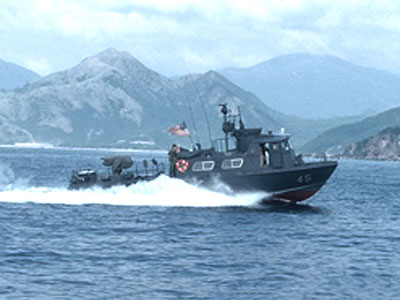
| Patrol Activity |
 |
The single mission of
Operation Market Time
was to interdict and bring a halt to the waterborne movement of manpower, contraband, and armament by the North Vietnamese into and along the
coastline of the south. Stopping this traffic was "job number one" for the Swift Boats, Coast Guard WPB cutters, and Vietnamese Navy
vessels assigned to Task Force 115.
The patrol assignments for these craft literally extended from the Cambodian border all the way to the De-militiarized Zone
Providing the final barrier to the enemy's deep water attempts at infiltration and support of land operations along the coast
and inside the rivers were secondary assignments accomplished by the Market Time Swifts. They were always there on patrol,
and were therefore able to provide a capability not available from any other military source in such a timely
manner.
Later sections of this web site address these latter very important and dangerous activities.
|
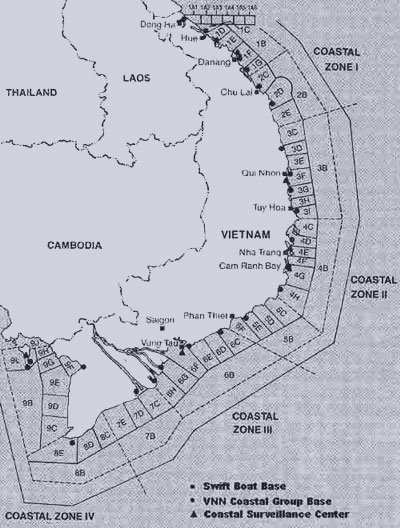 |
But it was the day to day presence of the small allied naval craft, especially the Swifts, on routine patrol stopping and searching any or all vessels operating close inshore, that had the most impact on the war by denying to the north of the eastern coastline as a means of supply. |
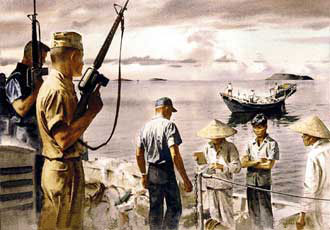
|
Tomas J. Cutler, in his book "Brown Water, Black Berets" {Naval Institute Press, Annapolis, MD � 1988} quotes a DOA post war assessment that "In early 1966, it was estimated that the enemy accomplished three quarters of his re-supply by infiltration via searoutes". By November 1968, commanding General Westmoreland was able to say "Market Time forces are a major element of my overall strategy, without which we would not succeed. They have successfully blocked intrusions via the sea, forcing the enemy to use the long and tortuous Ho Chi Minh trail ... " |
The patrols that played an important part in this turn around were certainly not glamorous. They were quite often routine to the extreme, always long and frustrating, plus relentlessly never ending. The dilemmas and dangers of the task were always there just below the surface. Again quoting Cutler: "The young sailor was in a distant land he had only recently heard of, to help the Vietnamese people, yet he could never trust any of them. He was there to preserve their freedom, yet he had to intrude upon their private lives, rummaging through their possessions, violating their sanctum. |
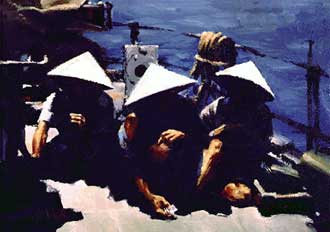
|
The nature of the war and his occupation dictated that he must view every Vietnamese as a potential friend,
and at the same time, as a deadly enemy"
Just about every sailor who served on the boats carried home images of the routine searches made during
their patrols. With dozens conducted every day, it would be hard not to pick up a camera and record these
activities. They reflect what day-to-day life aboard a South China Sea Swift Boat really entailed: Lots of routine,
interspersed with heightend action that sometimes produced the terrifying events addressed in the later
sections of this web site.
|
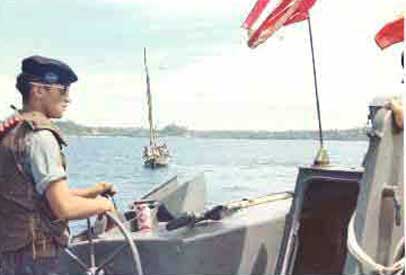 |
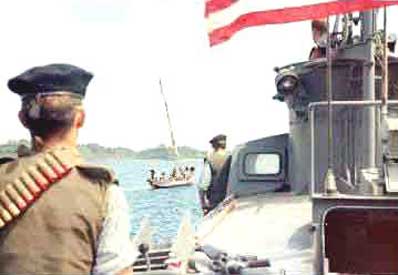 |
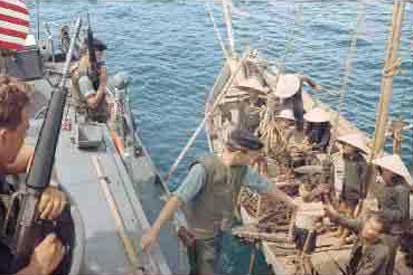 |
Searching sampans was the most common activity of every patrol. The occupants were simple fishermen, trying to provide their families with one of the staples of the oriental diet. Visual inspection of the sampans interior and its occupants was relatively easy, so going on board was rarely done unless something suspicious was noted. Checking the required ID papers of everyone on board would usually suffice to verify that they were indeed friendly. Two of the crewmembers had attended language and document familiarity courses during training at Coronado, but neither were really fluent in either. VNN liaison sailors were a help, but not always available for every patrol. |
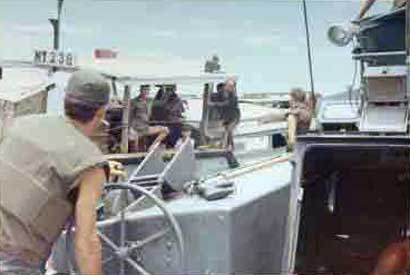 |
 |
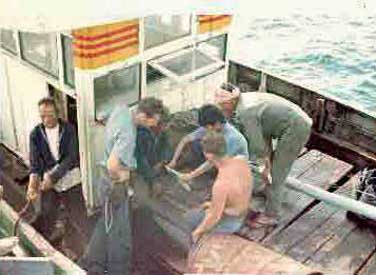 |
Also stopped for inspection were the larger motorized cargo vessels plying trade up and down the coast. Here boarding was necessary, and the process of checking papers, including cargo manifests, was compounded. A VNN liaison type was almost mandatory to make sense of the vessel and its contents. Despite having to transit several patrol areas along their routes, and probably being stopped in each one, the crews of these vessels were surprisingly congenial. |
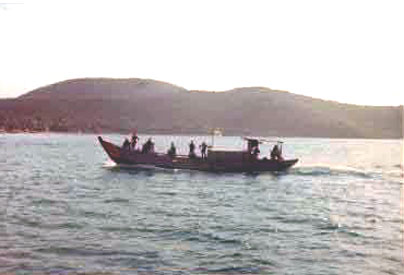 |
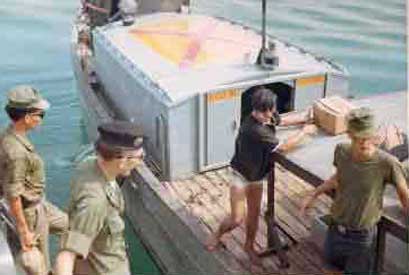 |
If the Swift Boat ran into anything that was uncertain or could not be resolved due to the language differences, the nearby VNN Coastal Groups, with their US advisors, could be called on to assist. A VNN Yabuta was usually not far off, and the advisors could be counted on to have their senior Vietnamese counterparts get involved if the situation so dictated. |
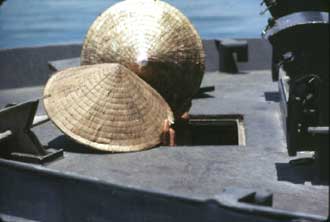
|
However, on many patrols there was always that suspicious cargo or group of people that "just did not seem right" and it was not possible to bring in the Coastal Group sailors to assist. This required that people, cargo or even the vessels themselves be detained for further investigation ashore. The suspect vessels and their cargo could easily be towed to the nearest base. However, this left the issue of where to confine the people involved in a humane but secure way. Some crews found very inovative ways to resolve this problem within the restricted space of the boat. |
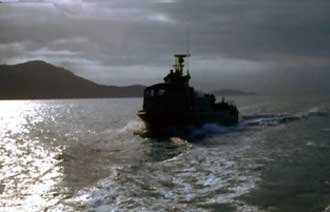 |
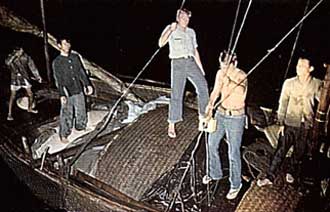 |
With the coming of darkness, the task of locating and searching waterborne craft became much more difficult. Night time on patrol
was infinitely more stressful than during the daytime. The uncertainty associated with the the activities on the water, the increase
in difficulty of navigation and the lack of visual clues concerning the people and contents of the craft that were encountered until
actually going alongside just heightened tensions. The boats did have searchlights and flood lamps in addition to illumination
rounds fired from the mortar. And, of course, the use of the radar was invaluable.
But the uneasy feelings associated with pulling up alongside an unkown, unlighted craft in a war zone in total darkness was an
evolution that the crews never really felt comfortable with.
|
 |
Almost every Swift Boat sailor has his own experiences to tell about the particular hazards of boarding and searching such vessels.
And some of them have been elevated to the level of tongue-in-cheek urban legends or salty sea tales. But one such persistant story, retold over many
libations while back at base, turns out to really be true. Bob Brown confirmed it. And it is succinctly described in the following
audio.
|
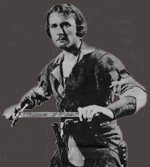 Errol Flynn |
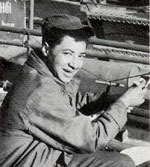 Ed Lyons |
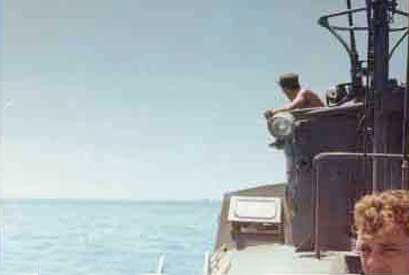 |
On some days, the patrol area would be just plain vacant of any activity. Really boring. And the hot muggy climate of the South
China Sea near the coastline on a calm day did not make such times any more bearable.
Uniforms became much more informal under such conditions. And the stress of surviving the tedium and lack of comfort pushed the
limits of one's professional motivation and attitude
|
However, the conditions of wind, weather and the sea state could quickly change to make even routine patrols almost impossible or dangerous. At such times, it was best not to tempt fate by hanging out of the pilot house hatchway. Loss of life, and even boats, due to weather did in fact occur during Market Time: See Cua Viet Swift Boat Rescue . Going to sea in a fifty foot boat was hazardous duty in and of itself |
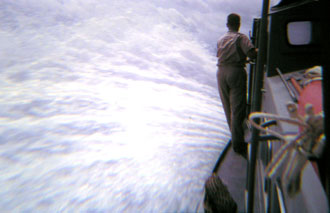
|
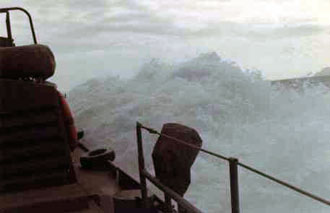
|
 |
When conditions got untenable, seeking refuge in a place like Phan Rang Bay, and mooring to the commercial tanker there was a god send. Note the exaggerated bow on the boat outboard of PCF 45. This was an experiment to enhance the weather keeping characteristics of the boat and decrease the chances of "blowing out" the front wind screens. Fortunately other solutions were found (see "Boat Tour" ). The Swift Boat was homely enough looking without that ugly, bulbous snout. |
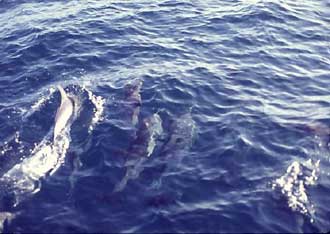 |
 |
And sometimes a welcome diversion from the monotony of a routine patrol was an encounter with the local fauna of the South China Sea. Dolphins or porposies seemed to be inquistively drawn to any intruders to their realm. A momentary break to enjoy their playful antics always brought a smile to your face. On the other hand, the various varieties of sea snakes were most likely harmful to your health if not kept at a safe distance. Even the fishermen knew to reject close encounters with such creatures as being neither useful to their tasks nor a plausable addition to their cooking pots. |
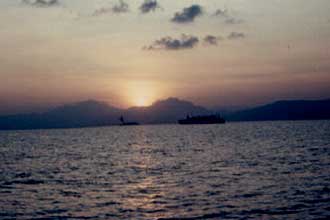 |
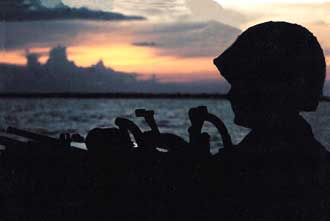 |
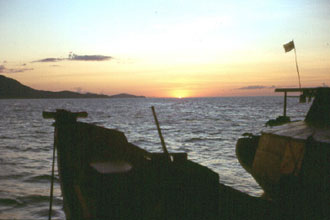 |
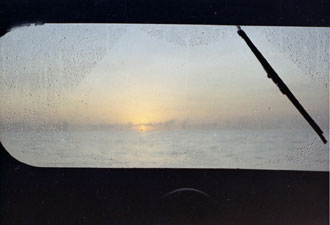 |
The highlight of every patrol, whether it was routine or not, was the spectacular view of the sun setting and then rising from the South China Sea. They signaled the beginning and end of a long night of uncertain navigation, investigation of un-identified surface contacts, racing off to put out some perceived crisis that the surveillance center or local land based military unit was concerned about, and even in some instances, wondering if the tracer bullets from the nearby shore line were intended for you or not. The first radiant streams of breaking sunlight also meant that the hours were down to but a few before your relief boat arrived. All good reasons to celebrate the dawning of a new day. |
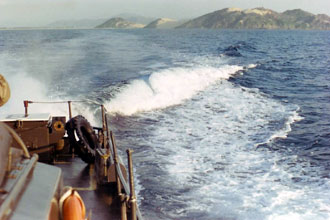
|
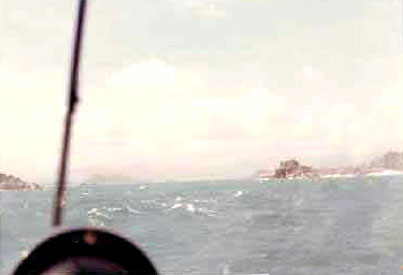
|
And finally, if your operating base was Coastal Division 14, the last task on every patrol was to clean up the boat, head back
toward Cam Ranh and then navigate the wind swept, somewhat narrow Strait of Cua Be, which separated the island of Binh Ba from the
tip of the Cam Ranh peninsula. Once through ... the waters smoothed out in the protection of the outer harbor ... and the PCF piers
were immediately on the starboard side.
|
|
|
Since the early part of 1971, the Armed Forces of Malta (AFM) in the Mediterranean have used Swift Boats to accomplish the same tasks as those which were performed by their US counterparts in
South East Asia.
These Maltese Swifts are still on active duty today, performing routine patrols in cooperation with Italian and
north African authorities to search for and interdict contraband and illegal aliens moving from the northern coast
of Africa through Malta to the coasts of southern Europe.
In addition, they are extensively used for harbor security tasks in the many waterways of this tri-island nation, being
the critical "first-on-the-scene" vessels during rescue at sea operations near the coastline, dangerous colateral functions
such as disposal of un-exploded ordinance and explosives, and even at ceremonial events such as "standing in" to represent
Royal Navy destroyer escorts for the re-enactment convoy of "Operation Pedestal" commemorating the relief of Malta from the
Nazi blockade sixty years ago in World War II. As part of the reunions of Swift sailors from both nations held in March of 2003, "Operation Radio Free Swift" was conducted during the activities in Norfolk, USA and the Haywarf Maritime Squadron Base in Malta. Amateur radio stations at both locations operated simultaneously to "spread the word" of these remarkable little vessels over a large portion of the world: from Iceland in the north to Tasmania in the south, and from Japan in the western Pacific to countries in the middle east. |
 |
Special Event Radio Station Honours Swift Patrol BoatsThe Maritime Squadron of the Armed Forces of Malta (AFM) and amateur radio operators of the Malta Amateur Radio League are operating a Special Event Radio Station "9H9SWT", in conjunction with the US Swift Boat Sailors Association (SBSA). They are celebrating the first commissioning of Swift class patrol boats in South East Asia and the 30-plus years of service by boats of this type by the AFM. The AFM operates the last examples of Swift Boats still on active duty anywhere in the world. The Special Radio Event Station is transmitting from the home base of the Malta Swifts in Hay Wharf at the same time as the SBSA Special Event Station "N4S" operates from the Sheraton Waterside Hotel, location of the SBSA reunion in Norfolk, Virginia, USA. The aim of both stations is to provide an opportunity for interested radio amateurs to "visit on the air" and "participate in amateur radio" with members of both the AFM and the SBSA, as they share their interesting personal experiences on board these very first special warfare craft to be deployed by the US Navy and the AFM. A reunion for members of the former Malta Land Force (MLF) and ex-AFM servicemen was held yesterday as part of the event. The activities have been locally sponsored by Camline Internet Services Ltd., Datastream, Fabian Enterprises Ltd, and Compleet IS Ltd, who provided Internet connectivity, computer and radio hardware for this station. |
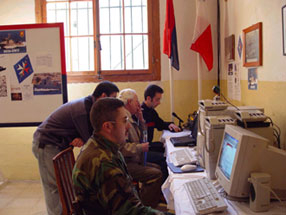 Operation of Malta Station 9H9SWT |
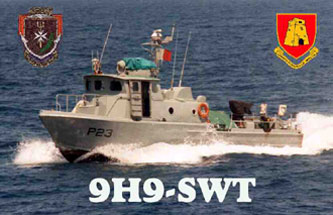 Confirmation QSL card for 9H9SWT |
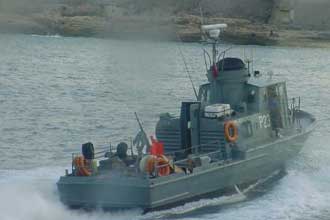 |
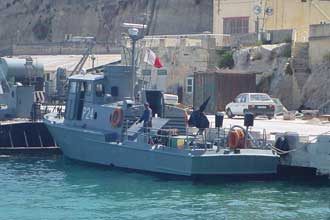 |
| Patrol Craft P-23 Guarding the Malta Shoreline | Patrol Craft P-24 Resting Between Patrols |
 |
 |
| Protecting Destroyer USS Arleigh Burke (DDG-51) | Escorting Dutch Submarine HNLMS Dolfijn into port |
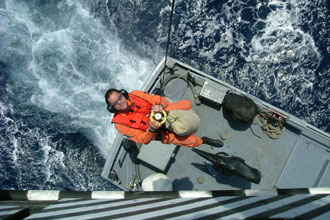 |
 |
| Helo drop of emergency supplies | Dealing with the mass of illegals |
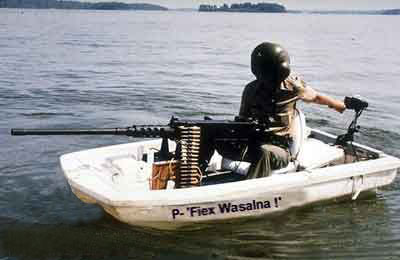 |
Spoof AFM "Patrol Boat River" |
This web site is Copyright � 2002 by Robert B. Shirley. All rights reserved. Click on image to return to the homepage
|